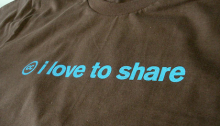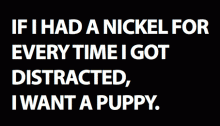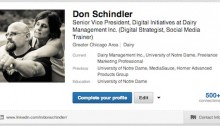Category: Branding
-
Are There Only Two Steps To Being A Great Leader?
If I asked you to picture a good leader, who would you think of? An old boss, a church pastor, a captain of one of your teams. Or maybe you think of a celebrity leader. Like Patton or maybe a President. To tell you the truth, I don’t think of much when someone tells me…
-

What’s the secret to creating your personal brand strategy?
Share. It’s pretty simple, right? When I teach Personal Brand Strategy, I get a lot of confusing looks when I talk about sharing and exposure. I know what the class is thinking – this isn’t what we were taught in school. In fact, I was taught that the work you do is enough. You don’t…

